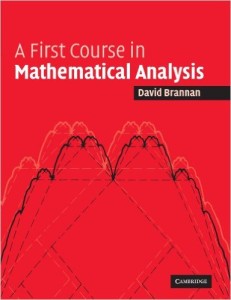Lara Alcock wrote in her book "How to Study for a Mathematics Degree" a warning to all mathematics students to be prepared to adjust their intuition.
Very quickly after starting with "A First Course in Mathematical Analysis" by David Brannan (see my earlier post), I have come across something that very much breaks my intuition. It turns out that ![]() .
.
![]()
![]()
![]()
![]()
![]()
![]()
Simple, and surprising. Although also somewhat disturbing.
The equals sign tends to show that the object on one side is identical to the object on the other. In this case, they look like two completely different objects! We all know what "![]() " is, and
" is, and ![]() looks distinctly different.
looks distinctly different.
Of course, based on Lara Alcock's advice, my first thought was "how on earth do I adjust my intuition to make this feel completely logical?!"
After some thinking, the following helped me a little bit: Before, I considered ![]() to be a number that was infinitely close to
to be a number that was infinitely close to ![]() , due to the infinity of "
, due to the infinity of "![]() "s after the decimal point. I now, however, consider
"s after the decimal point. I now, however, consider ![]() to be an infinitely accurate representation of
to be an infinitely accurate representation of ![]() .
.
For me, if I consider an approximation to be "infinitely accurate", then that approximation is the object it's trying to approximate. ie: An infinitely accurate approximation of 1 is, essentially, 1.
My opinion of this may change, but this is what's helping me make sense of this for the moment....

